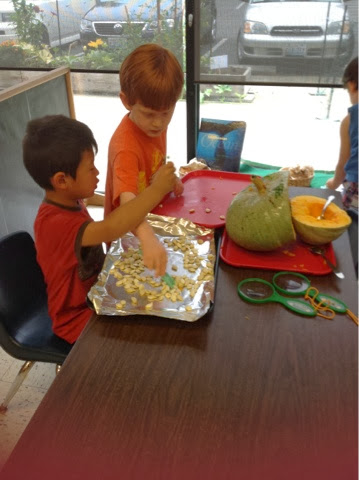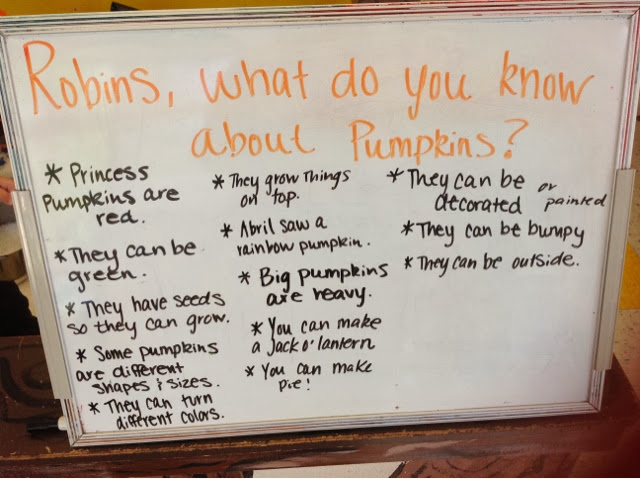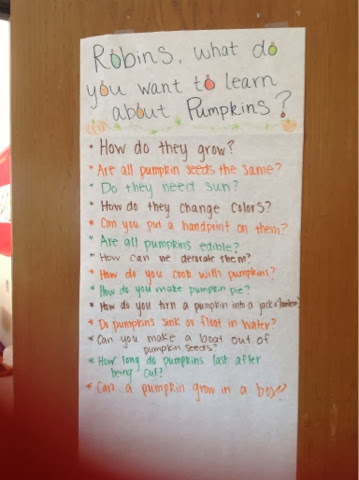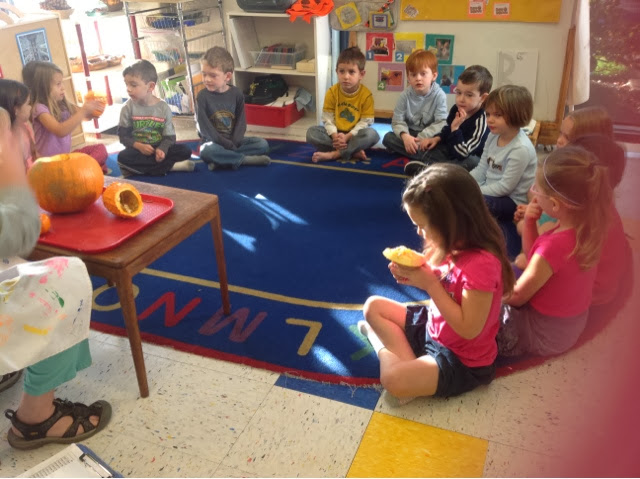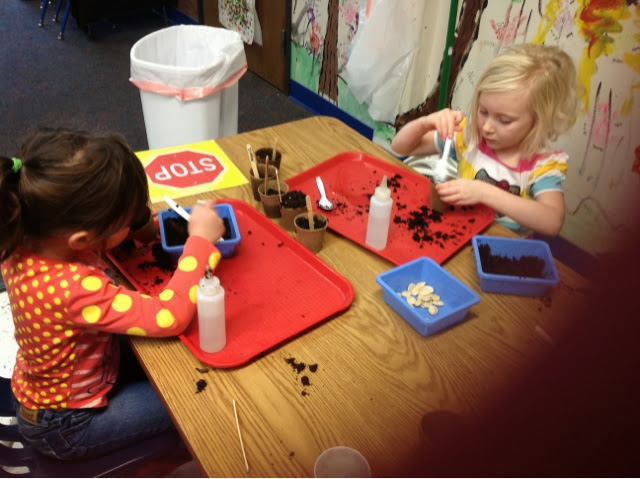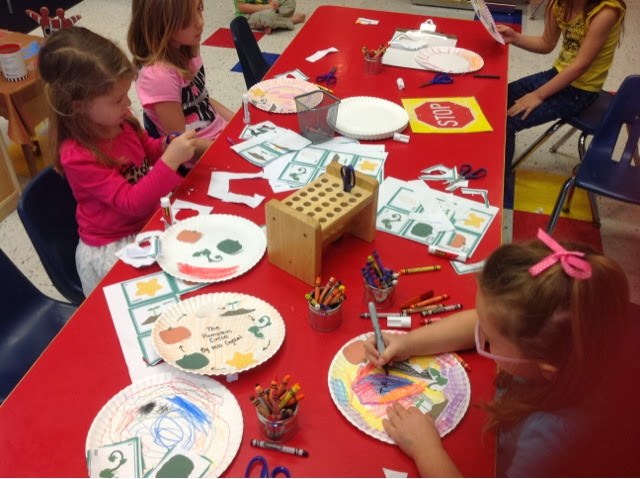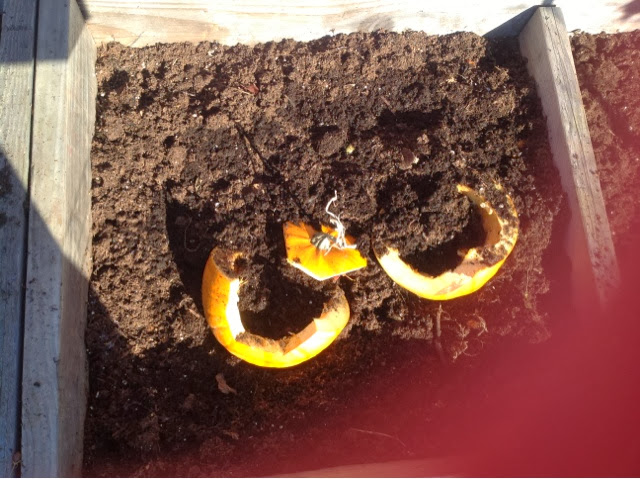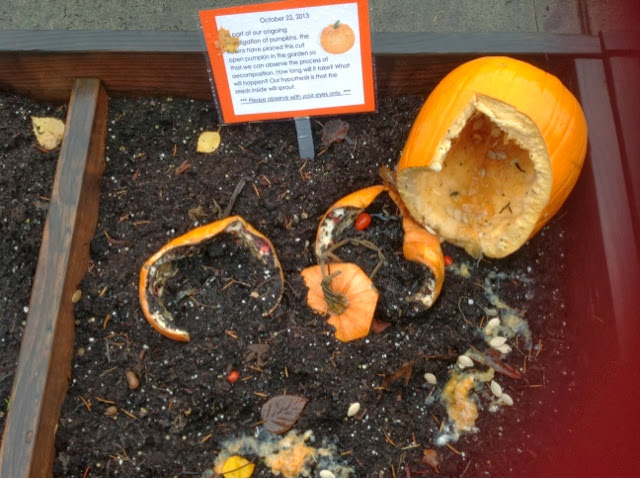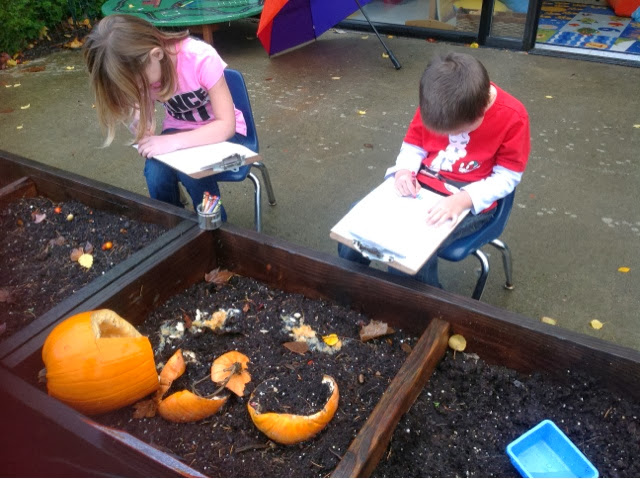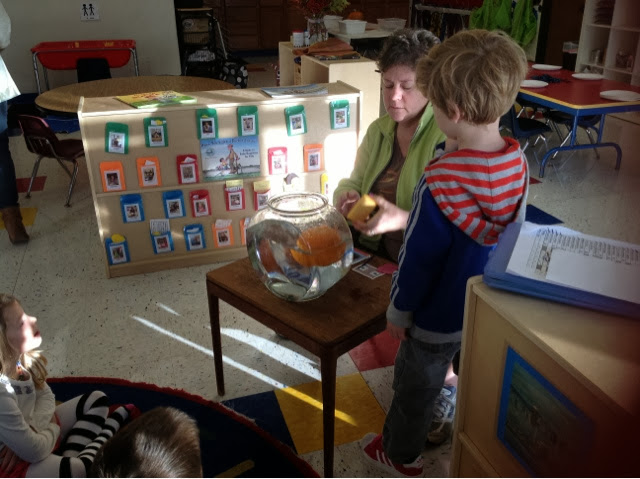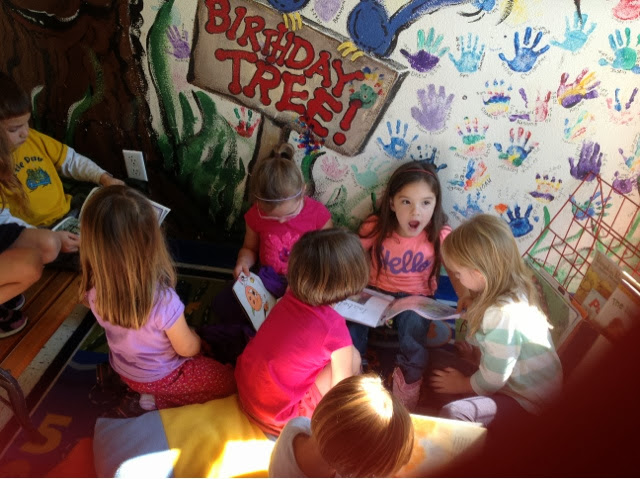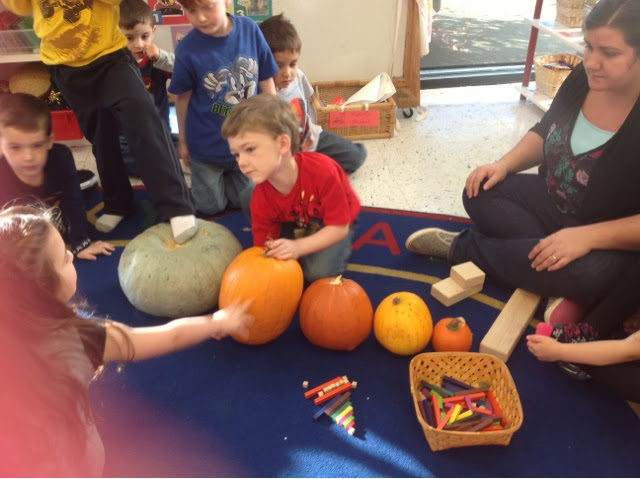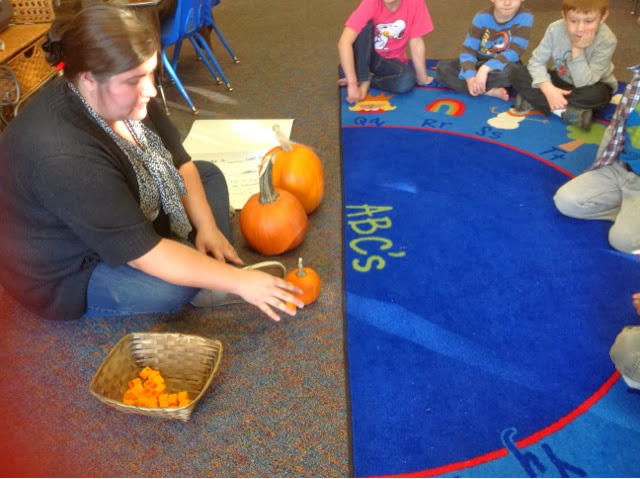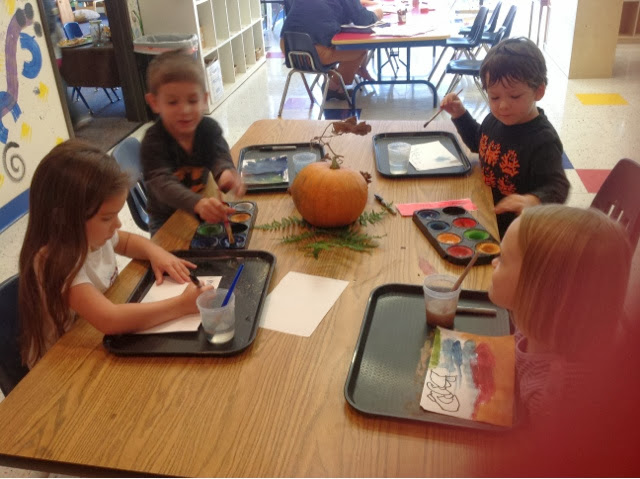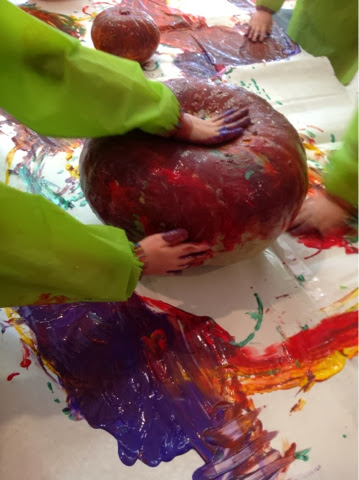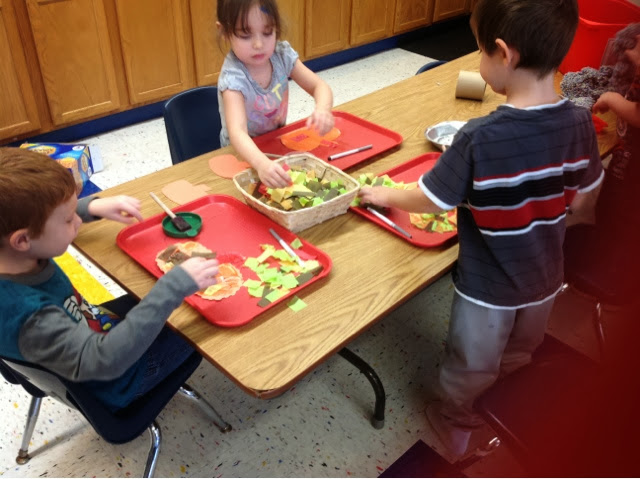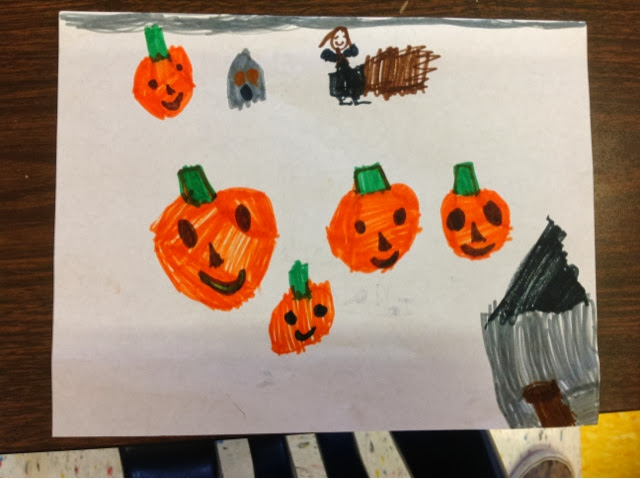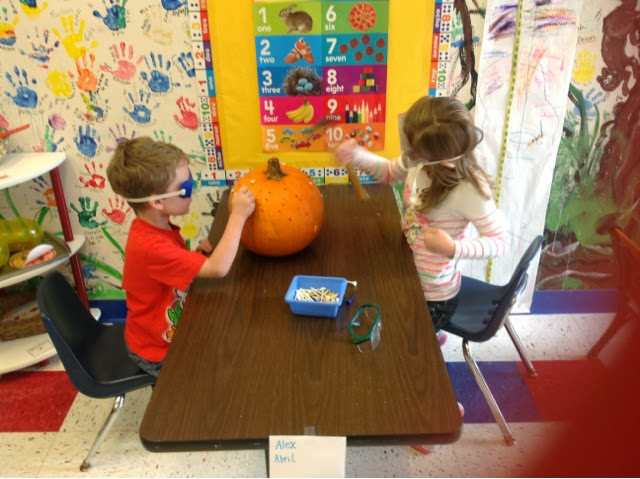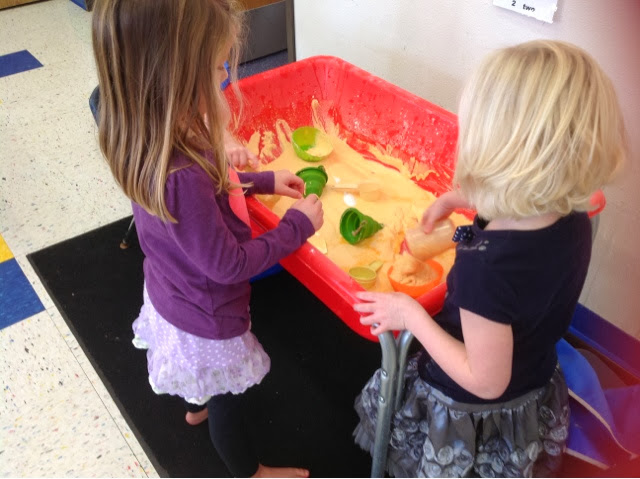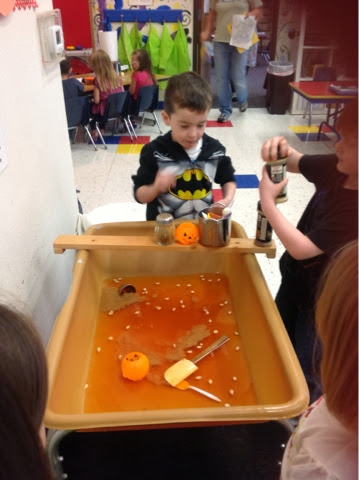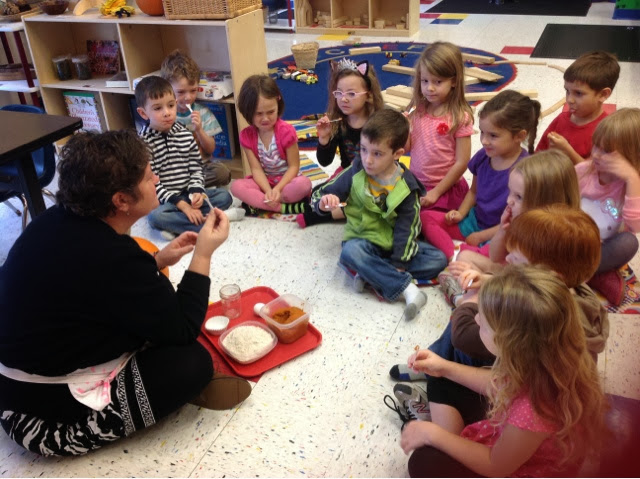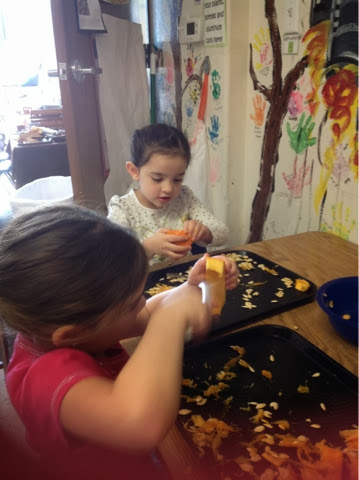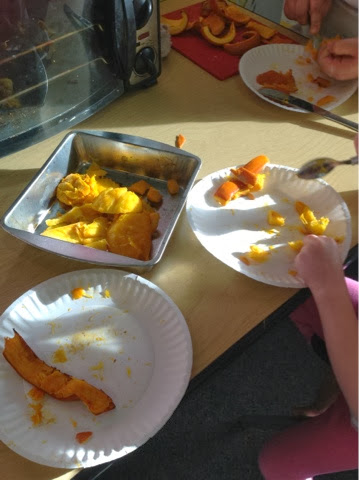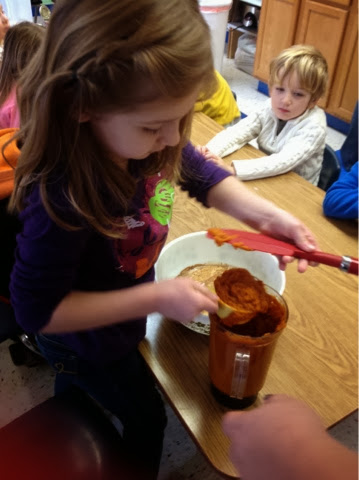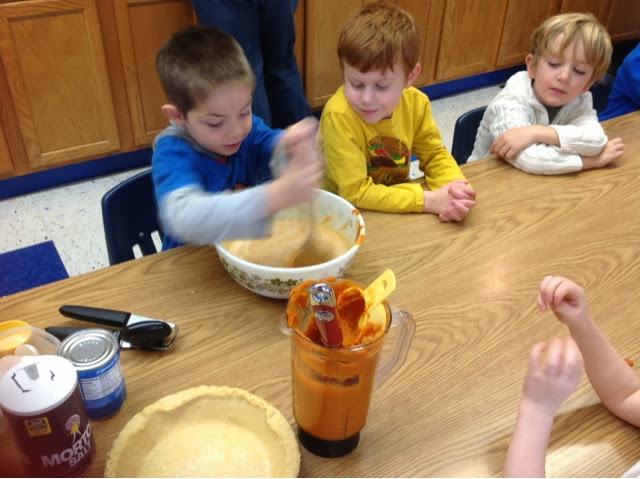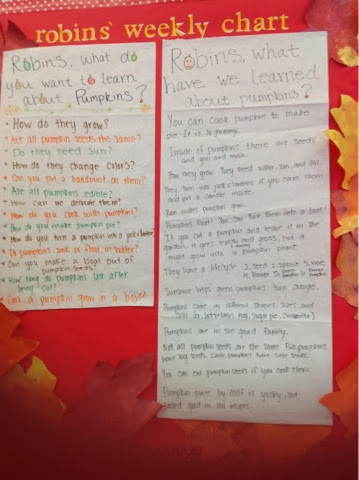As most of you know, over the last few months, the Robins have been conducting an in-depth long term study of pumpkins. Please take a look at all we’ve been learning…
It all began in September, just weeks after school started. Miss Dawn brought in some green pumpkins her neighbor had grown. The Robins noted that these pumpkins looked quite a bit different than the pumpkins they were used to. One day a Robin asked what was inside the pumpkin and since one of our main goals in the Robins class is to provide opportunities for relevant hands-on learning, we knew there was only one way to find out. That day at circle time we cut one pumpkin open and let the Robins look, feel, smell, and taste the answer to their question.
The Robins were so interested and engaged we decided to extend the learning by asking the Robins what they already knew about pumpkins and also what they wanted to learn about them. We spent the next two months answering our questions by making observations and conducting experiments.
What’s the difference between a pumpkin and a gourd?
Are all pumpkins seeds the same?
We cut open many different varieties of pumpkins and gourds so that The Robins could make comparisons between them.
How do pumpkins grow?
Each Robin had an opportunity to plant a pumpkin seed and watch it grow.
We also conducted three experiments to find out for ourselves what pumpkins need to grow. We planted three seeds – one without sun, one without water, and one without soil. For weeks, the Robins cared for their seeds and observed the changes as their seeds sprouted and grew taller.
We explored the life cycle of pumpkins in a number of ways. We made crafts that involved sequencing the stages of the pumpkin life cycle…
What happens to a pumpkin after its been cut open?
After cutting open a pumpkin for observational purposes, we left the remains in the garden and asked the kiddos to make a hypothesis about what would happen. Using what they’d learned about how pumpkins grow, they hypothesized that the seeds from that pumpkin would sprout. This led as to an exploration of decomposition. Over the course of our study, the Robins took turns going out to the garden to draw their observations of our decomposing pumpkin.
Do pumpkins sink or float?
This was such an interesting question and our experimentation led to some really fascinating discoveries about the properties of different materials. We began by giving the Robins a variety of objects to put in water to see if the items would sink or float. After having some time for hands-on experimentation, we asked the Robins to predict whether a small pumpkin would sink or float.
What else can you use pumpkins for?
If pumpkins float, can you use them to make boat?
We made a lot of scientific discoveries throughout the course of our study, but we found some really interesting ways to integrate pumpkins into different content areas.
Literacy…
We read many different fiction and non-fiction books about pumpkins and even wrote some stories of our own. Our investigation also introduced us to some new and exciting vocabulary (life cycle, estimation, prediction, observation, hypothesis, decomposition, and so much more.)
Math…
There was a lot of pumpkin themed math learning over the last few months. We estimated and counted seeds, put pumpkins in order from smallest to largest, and used different tools (rulers, measuring tapes, unifix cubes, etc.) for measuring our pumpkins.
Art…
We painted pictures of pumpkins and even painted ON pumpkins….
Tissue paper pumpkin collages…
For our Monthly drawing in October, we drew pumpkins…
We even saw the Robins incorporating their excitement for pumpkins into their free time artwork…
Sensory…
Pounding golf tees into pumpkins was a great exercise for practicing hand eye coordination.
Pumpkin ooblick was obey gooey fun!
Pumpkin cloud dough…
Pumpkin soup…
This sensory activity really engaged all the senses. The children were ecstatic about getting to use real spices and cooking utensils in their pretend play.
Cooking…
Although the Robins decided canned pumpkin puree was kind of yucky, they made some really yummy recipes, including pumpkin cupcakes and pumpkin soup.
Towards the end of our study, the Robins made a pumpkin pie FROM SCRATCH!
Last week we concluded our study by reviewing and celebrating everything we’ve learned about pumpkins and making a display in our science center. We had asked the robins what they knew about pumpkins and what they wanted to know about them, but now it was time to ask them what they had learned.
Please take a moment to visit the middle room and see the children’s answers and the display in our science center.
Thanks for reading!
Miss Crystal & Miss Julie

 Schedule Tour
Schedule Tour


